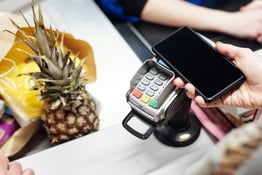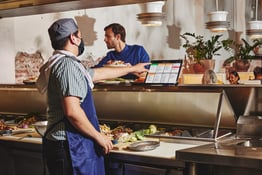Hospitality doesn’t tend to attract big data people. You get into this business for the warmth of preparing someone a marvelous meal, or the camaraderie of serving them the perfect drink, at the perfect time of day.
But the relationship between big data and restaurants can be a match made in heaven when it’s used correctly. While a legal pad and a desktop calculator can still help a business tell whether it’s profitable or not, new technology and practices have made it easier than ever to get the information you need to make informed decisions that can boost sales and profits. Simply put, data analysis is among the emerging restaurant technologies that can help you what you want to do, but more efficiently and profitably.
Whether you’re looking to spot kitchen inefficiencies or figuring out how to attract more customers to your restaurant, consider the ways restaurants are using data analysis to get ahead.
>>>RELATED: A Guide to the Latest Restaurant Technology Changing the Industry
Data helps with restaurant inventory
You have to know what you’re spending on what you’re selling. Generating income may start with getting a customer to place an order, but you’ll only turn a profit by determining what is going out on each plate.
Data analysis for restaurants starts with figuring out the cost of each dish on the menu. To do this you’ll need the unit price for ingredients, vendor or supplier information, and accurate inventory counts.
This type of simple restaurant data analysis will help you avoid overordering and generating costly spoilage. Checking your POS or delivery reports can also gather the data needed to know what your best-selling items are and which days of the week they’re ordered the most. You can use this information as an opportunity to promote your most profitable dishes to see higher returns.
Data helps you manage the cost of goods
Is the price of fresh greens falling? The price of dairy rising? Your costs are bound to change over time, perhaps sneakily. Staying on top of how much you’re paying for products and ingredients doesn’t end with your first order.
Software and services can help you track and flag any fluctuations. Keeping an eye on food costs can help you avoid unexpected rises in expenses, and help you take advantage of any price drops that might make your existing menu items even more profitable and worth promoting. Data-driven restaurants are restaurants that save money.
>>>RELATED: How To Do Restaurant Food Inventory Management Right
Big data helps you optimize your restaurant payroll
You gotta know what you’re paying your people. While the profitability of plates may be your lifeblood, payroll can often be the hidden issue that keeps a restaurant operating in the red. And if you want to hit the industry-standard 20 to 30 percent range for labor costs, you’ll probably need to do more than eyeball it.
Fortunately, payroll and scheduling data you probably already have can make it easy to spot where you might be overspending. Matching up sales data from your POS with scheduling software can tell you when there are actually too many cooks in the kitchen. But digging a little deeper can also expose lost profits. Are tables turning too slowly because you’re understaffed at a consistently busy time of the week? Do you have the budget for an extra porter to keep the kitchen running smoothly? Data-driven restaurants can turn their payroll into a well-oiled machine.
Data helps you learn your customer flow
Serving a quality product that keeps someone coming back is the hard part of running a restaurant. But to best serve your customers, you have to go deeper than friendly service and signature dishes.
Analyzing data from your POS can help you figure out how well you’re moving customers in and out of your restaurant: seating efficiency, party size, check averages, table turn time averages. These in turn can help you figure out just who your customers are, helping you to predict what they’ll need.
By listening to what your mobile payment system tells you, for instance, you might discover that your restaurant caters to more couples on dates than it does families, meaning you might be losing out on potential sales by having too many four or six tops set out on a busy night. Or you might find that it pays to reconfigure your seating to make take-out easier on certain nights of the week.
Big data can help you target your restaurant marketing
If you’ve checked your email inbox or scrolled an Instagram feed lately, you’ve already seen how restaurants are turning data into a competitive tool. POS terminals have become as good at collecting customer information as they are at taking payments.
Use each sale as an opportunity to build a connection with your customers and enhance your restaurant marketing efforts. Gathering email addresses can help you bring back coveted return diners with regular updates, but your POS might be able to give you even more valuable information, such as their age, location, or personal interests based on ordering history. You can use this data to target your social media ads and get the most mileage out of your marketing budget. If you know more about who and where your customers are, you can do a better job of reaching them.
When (not) to use big data for your restaurant
All of that said, don’t get bogged down. If you’re not a big operator, you may not need to gather data like one. If someone offers to let you track the temperature of your produce delivery trucks from pickup to dropoff, that’s highly cool — but ask yourself whether it’s necessary. A national chain might need to know how weather patterns could affect crop prices, for instance, but your time may be better served chatting up the suppliers at your favorite farmer’s market.
What seems granular to one restaurant could be a boulder’s worth of data for another. So don’t throw yourself into “big data” merely for the sake of trying to keep up. For many people in the hospitality industry, small data — knowing a regular’s name and usual order, for instance — can prove just as valuable.
[Photo by Tim Douglas from Pexels]





